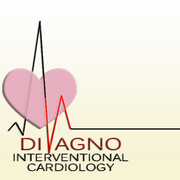What You Need to Know About Heart Attacks

According to the CDC, someone in the U.S. has a heart attack every 40 seconds. Also known as myocardial infarctions, heart attacks are a common cause of death; however, many people don’t know much about them. For instance, did you know that chest pain is only one heart attack symptom and that other signs might appear before any obvious pain? Understanding the basics of heart attacks, their causes, and their treatment could save your life or the life of a loved one. Here’s what you need to know.
What Is a Heart Attack?
At the most basic level, a heart attack means that a part of the heart isn't receiving enough blood flow. Usually, this is caused by a blockage in the coronary artery. For instance, coronary artery disease causes the arteries supplying blood to the heart to become narrow and clogged with plaque, a substance comprised of fatty matter, proteins, inflammatory cells, and calcium. Although the outer shell of the plaque is hard, if it cracks, it can lead to the development of blood clots, which block blood flow to that part of the heart.
Without blood flow, the heart is deprived of oxygen, causing the death of heart muscle cells and a heart attack. The longer the heart goes without a flow to that area, the more severe the damage and the greater the chances of death.
What Are the Symptoms of a Heart Attack?
Many people think heart attacks cause dramatic situations where the person clutches their chest and collapses to the ground; however, that doesn’t always happen. In fact, in women, it’s rare for sudden, severe chest pain to indicate a heart attack.
 Many deaths occur because people don't recognize all of the major heart attack symptoms and don't seek medical help right away. For most people having an attack, chest pain is accompanied by upper body pain, pain in the left shoulder or jaw, sweating, nausea, fatigue, and shortness of breath. If someone has any combination of these symptoms, call 911 right away or seek emergency medical care.
Many deaths occur because people don't recognize all of the major heart attack symptoms and don't seek medical help right away. For most people having an attack, chest pain is accompanied by upper body pain, pain in the left shoulder or jaw, sweating, nausea, fatigue, and shortness of breath. If someone has any combination of these symptoms, call 911 right away or seek emergency medical care.
How Are Heart Attacks Treated?
The first priority in heart attack treatment is to restore blood flow to the heart. This includes first determining the location and severity of the block using an EKG, blood tests, and echocardiography. Typically, medications to thin the blood (including aspirin) and break up blood clots are administered.
Treatment may also include cardiac catheterization to determine the exact location of the blockage, as well as surgical procedures, such as angioplasty, stent implantation, or bypass to open up the arteries and allow blood to flow. After a heart attack, treatment usually includes medication and lifestyle changes.
If you are having heart attack symptoms, seek emergency medical care immediately. For your other cardiovascular health needs, turn to DiVagno Interventional Cardiology, MD, PA in Bergen County, NJ. With more than 20 years of experience diagnosing and treating patients with a range of cardiac conditions, they will provide the exceptional, compassionate care you need to keep your heart healthy. For an appointment, call (201) 845-3535. Visit their website for more information.
About the Business


